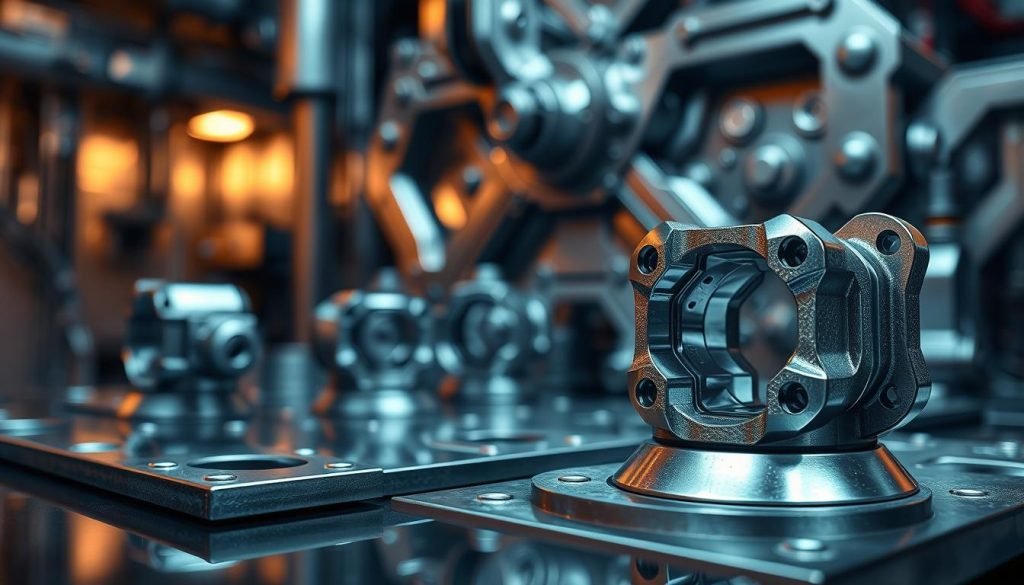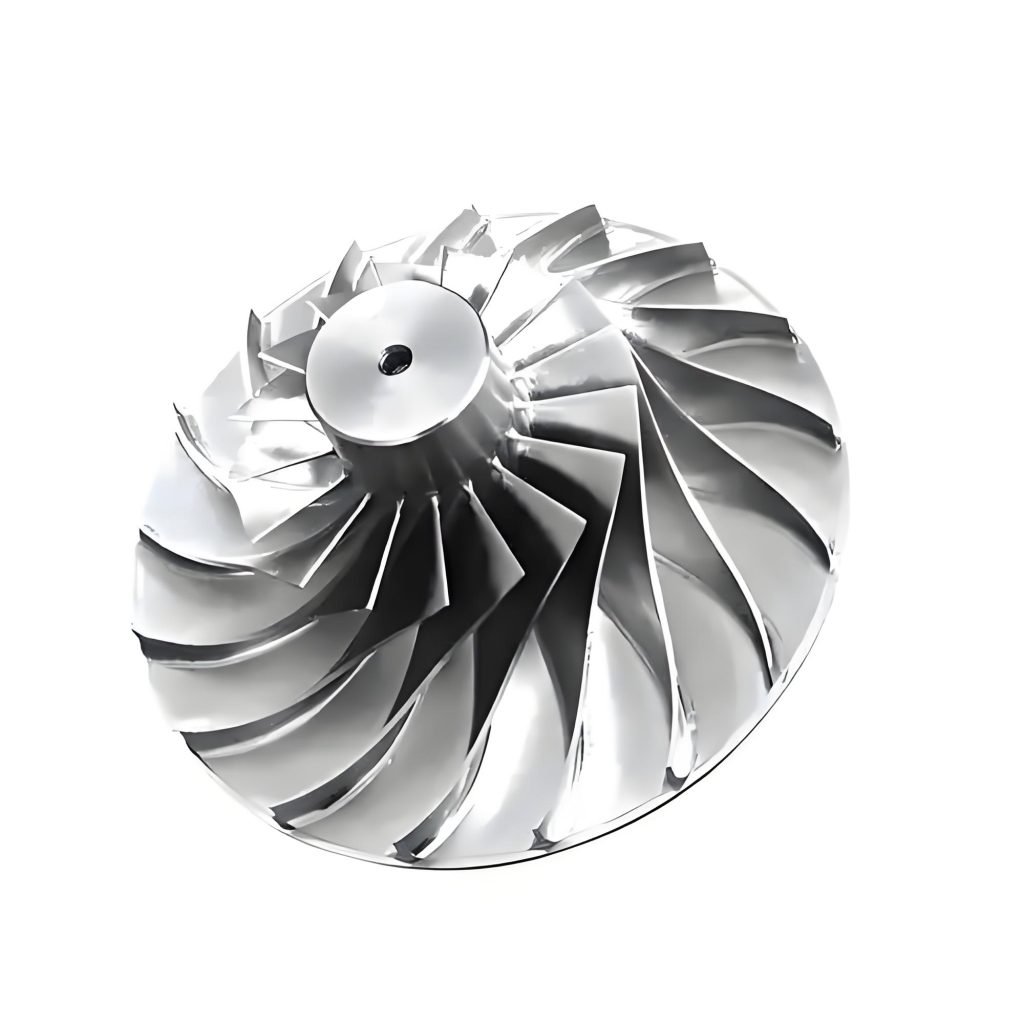Surprisingly, a common aerospace grade delivers strength greater than low‑carbon steel while weighing about 45% less, changing the strength-to-weight ratio for many critical components.
You’ll see how combining titanium with alloying elements creates materials that stay tough at high temperatures and resist seawater corrosion. Commercially pure grades vary by oxygen and balance formability with strength. The most used mix, Grade 5 (Ti‑6Al‑4V), hits a sweet spot for fatigue, corrosion resistance, and weight for aerospace and medical applications.
This ultimate guide gives a clear, practical overview so you can pick the right metals for your parts. You’ll learn main types by microstructure, how elements change properties, and why certain grades dominate key industries.
Start Here: Why Titanium and Titanium Alloys Matter for Your Components
For demanding components, the right metal delivers big weight savings with reliable strength and durability. You gain an exceptional weight ratio that lets you make lighter parts without giving up fatigue performance or structural integrity.
These metals offer broad corrosion resistance in harsh environments, from seawater to chemical plants. That resistance lowers downtime and total lifecycle cost for equipment in marine, chemical processing, and medical applications.
Pick the correct grade and you can operate at higher service temperatures—Grade 5 is commonly used up to about 400°C. Commercially pure grades prioritize corrosion resistance where chemistry, not heat, governs material choice.
You also benefit from predictable properties and known pedigrees, so meeting specs and certifications is easier. With the right elements added, you can balance high strength, ductility, and weldability to suit your manufacturability and performance needs.
What Is a Titanium Alloy and How Does It Perform?

When you add specific elements to pure titanium, you get metals that balance light weight with much higher tensile strength.
Core performance benefits
You’re looking at a titanium alloy when titanium is combined with other elements to lift tensile strength, fatigue life, and temperature capability while keeping density low.
The result is a high strength-to-weight profile that helps you make lighter, stiffer parts for weight-sensitive applications.
How alloying elements change properties
Aluminum raises strength and temperature limits; vanadium improves fatigue resistance and hardenability.
Molybdenum and chromium support high-temperature strength and wear resistance, while zirconium boosts oxidation and corrosion resistance, creating excellent corrosion resistance in harsh media.
Ti‑6Al‑4V commonly works to about 400°C, with density near 4420 kg/m3, modulus ~120 GPa, and tensile strength around 1000 MPa.
Commercially pure grades vary by oxygen content, trading some strength for better formability and good corrosion performance when fabrication and seawater resistance matter more than peak strength.
Types of Titanium Alloys by Microstructure and Performance
Microstructure is the fastest way to map a metal’s behavior to your part’s needs. Use families as a selection filter for processing, service temperature, and mechanical targets.
Alpha and commercially pure grades
Alpha alloys and commercially pure titanium prioritize formability, corrosion resistance, and creep resistance. They are not heat treatable and are often chosen where ductility and seawater resistance matter more than peak strength.
Near‑alpha
Near‑alpha grades add small beta stabilizers to improve high‑temperature stability. Pick these when you need reliable performance at elevated temperatures—typically up to about 500–550°C.
Alpha‑beta
Alpha beta families (for example Ti‑6Al‑4V) are heat treatable and balance strength, fatigue resistance, and processing flexibility. You can tune strength and toughness through solution treatment and aging.
Beta and near‑beta
Beta alloys have enough beta stabilizers to retain the phase on quench. They offer very high strength, good cold workability, and strong response to heat treatments. Use them when maximum strength or advanced forming is required.
Quick rule: match creep and temperature demands to near‑alpha or alpha‑beta, and choose beta families when strength and cold forming drive the decision.
Common Grades of Titanium Alloys with Properties and Applications
Choose the proper grade and you can match material behavior to your component needs and machining plan.
CP Grades 1–4
Commercially pure grades vary mainly by oxygen content. They give excellent corrosion resistance and weldability with low-to-moderate strength.
Use these in marine fittings, chemical service, and formed sheet parts where ductility and good corrosion resistance matter.
Grade 5 (Ti‑6Al‑4V)
This workhorse combines ~6% Al and ~4% V for heat‑treatable strength, fatigue life, and broad machinability. Service temperatures reach about 400°C.
It fits aerospace airframes, industrial components, and many medical implants thanks to its balanced properties.
Grade 6
Grade 5Al‑2.5Sn offers improved stability at elevated temperatures. Pick it for airframe skins and engine zones where creep resistance and weldability matter.
Grade 7
Palladium additions boost passivity and crevice corrosion resistance in aggressive media. Specify this grade when crevice corrosion is a key risk.
Grade 9
Ti‑3Al‑2.5V trades some peak strength for excellent tube formability and fabrication. It’s common in aircraft tubing and weight‑sensitive structures.
Grades 11 & 12
Grade 11 (Pd-bearing) and 12 (Mo/Ni additions) target high corrosion resistance and fabricability for chemical processing equipment and service in harsh media.
Grade 23 (ELI)
Grade 23 reduces interstitials to raise toughness and ductility for implants and devices. It meets implant specs like ASTM F136 for surgical components.
Match each grade’s properties and certifications to your parts and Fecision’s machining guidelines to optimize performance, compliance, and cost.
Why Is Machining Titanium Alloys Difficult?
What makes these metals hard to machine is how they hold heat and cling to tooling under load. You need a setup that controls temperatures, chips, and contact behavior to protect part accuracy and tool life.
Low thermal conductivity and heat at the cutting edge
The material sheds little heat into the workpiece or tool, so the cutting edge runs hot. High temperatures speed chemical wear and shorten tool life. Tailor feeds and coolant to move heat into the chip, not the tool.
Work hardening, chip control, and built‑up edge
Light feeds or rubbing cause work hardening that raises cutting forces on the next pass. Chips tend to stick and re‑weld, forming built‑up edge that ruins surface finish and accuracy. Plan chip evacuation and use geometry that breaks chips cleanly.
Galling and rapid tool wear in low‑lubricity conditions
Low lubricity lets material smear and gall contact surfaces, especially on interrupted cuts. Expect accelerated flank and notch wear, plus chatter on long slender features. A strong coolant strategy, rigid fixturing, and the right inserts reduce these risks.
Effective Tips for Machining Titanium Alloys
You can reduce built‑up edge and chatter by matching cutter geometry, coolant delivery, and spindle strategy to the workpiece.
Select the right tooling
Pick wear‑resistant, coated carbide cutters with sharp radii. Keep stick‑outs short and use robust toolholders so your setup stays rigid.
Rigid fixturing lowers vibration and keeps surface finish consistent for components with tight tolerances.
Drive heat into the chip
Raise feed per tooth and limit radial engagement so the cut loads the chip, not the tool. Prefer a horizontal spindle where possible to help chip flow and heat transfer.
Coolant strategy and delivery
Increase coolant concentration and pressure, and aim nozzles directly at the shear zone. Accurate delivery cuts local temperatures and reduces BUE.
Control cutting parameters
Set feeds above minimum chip thickness to avoid rubbing. Choose spindle speeds that steer clear of resonance and consider variable‑pitch tools to reduce chatter.
Prevent galling and protect parts
Improve chip evacuation with controlled toolpaths like high‑efficiency milling and adaptive clearing. Use lubrication, edge honing, and clean evacuation to limit galling.
Verify results with in‑process monitoring and quick inspections. This keeps tool wear patterns visible and protects part quality for demanding applications and environments.
Industries and Applications of Titanium Alloys
Many industries choose high-strength, corrosion-resistant metals when performance and uptime matter most. You’ll see where low mass and lasting strength translate into real benefits across sectors and part families.

Aerospace uses
In aerospace you reduce weight in airframes, landing gear, fasteners, and turbine engine components without losing rigidity or fatigue life. That weight savings boosts fuel efficiency and payload capacity for your programs.
Medical and implants
For medical implants and surgical instruments, biocompatibility and corrosion resistance matter. You get long service life in orthopedic and dental implants and reliable performance for instruments used in surgery.
Automotive and sports
In cars and sporting gear, these metals cut mass in exhausts, springs, and frames. You gain improved acceleration and handling while keeping the strength and durability needed for high‑performance parts.
Marine and chemical processing
Marine and chemical processing rely on resistance to pitting and crevice corrosion in chloride or acidic environments. Specify the right grade to extend uptime and lower replacement and maintenance costs.
Electronics and industrial equipment
Electronics and industrial machinery use corrosion-resistant connectors, heat exchangers, and high-performance components exposed to harsh fluids. Standardizing on common grades helps meet traceability and certification needs for your supply chain.
Titanium Alloy Selection: Matching Types and Grades to Your Requirements
Translate your performance needs into a shortlist before you pick materials. Start by defining required strength, fatigue life, service temperatures, and the environmental risks the part faces.
Balancing strength, corrosion resistance, and temperature performance
Use the service envelope to filter types. If corrosion and high‑temperature creep dominate, favor alpha or near‑alpha families that offer better resistance and stability.
Choose alpha‑beta grades when you need a balance of strength and fatigue life with heat‑treat options. Pick beta families when top strength and cold‑forming matter most.
Design and processing considerations: weldability, heat treatment, and formability
Think about fabrication early. Welding and tube forming may push you to specific grade choices, such as a grade titanium suited for thin‑wall parts or Grade 9 for tubing.
Also check processing routes—forging, tubing, or additive—and confirm heat‑treat response matches your manufacturing plan. For aggressive fluids, specify Pd‑bearing grades to limit pitting and crevice corrosion.
Run DFM with your machining partner, verify specs, and lock certifications to ensure the chosen alloys meet your applications and long‑term service needs.
Fecision: Your Reliable Titanium Machining Partner
Fecision pairs deep materials know-how with shop-floor discipline to turn challenging metal jobs into reliable deliveries. You get hands-on support that ties material choice to manufacturability, cost, and timeline.
Material guidance: from CP to alpha‑beta and beta families
We help you pick between CP, alpha alloys, alpha beta, and beta alloys so your selection matches required properties, strength, and corrosion resistance. That includes common grades like CP, 5, 6, 7, 9, 11, 12, and 23 used in aerospace and medical implants.
Precision machining for tough metals: process control, inspection, and quality
Our shop applies proven strategies: coated carbide tooling, rigid setups, coolant optimization, and tight parameter control to reduce heat, galling, and built‑up edge. In-process checks and final inspection ensure geometry, surface finish, and mechanical specs are met every run.
Quick quoting and DFM feedback to accelerate your program
Receive fast quotes and actionable DFM feedback to de-risk tolerances, fixturing, and tool access before production starts. You save time and cost while keeping traceability and compliance for critical components and implants.
Conclusion
Match material families to service demands, and you cut risk while improving lifecycle value.
Plan machining around low thermal conductivity and adhesion by optimizing tooling, coolant, and stable cutting parameters. That protects part accuracy and reduces tool wear.
Work with Fecision to turn your CAD into a production plan. Get a fast quote, material recommendation, and DFM feedback so your parts meet specs, schedule, and application needs across aerospace, medical, marine, and chemical processing.




